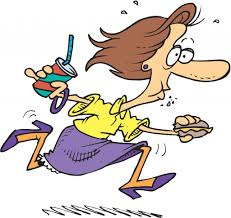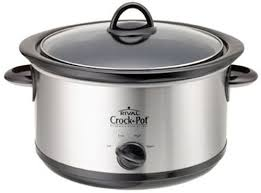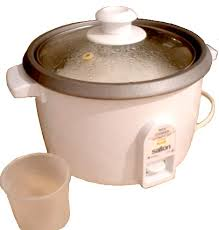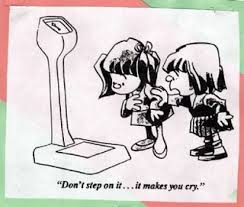Physical vs. Emotional Hunger
When we think of hunger, do we rate the level of our hunger?
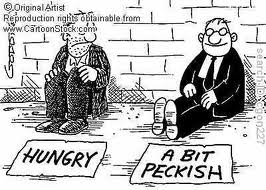
Do we politicize it when thinking about others?

However we look at it, hunger is a fairly serious matter the world over. I plan to leave politics out of this posting though.
In this section, I plan to talk about the different driving forces behind hunger and include a bit of scientific talk about the reactions which trigger hunger and thirst in the human body.
Honestly, what drives us to eat what we eat when we eat?
Under normal conditions, we become hungry because our body needs the food to provide our body with energy to meet physical demands. But under high stress conditions? When we’re experiencing stress (in any of its many forms, including happy or positive stress called eustress), we tend to want comfort foods. Often, we learn at an early age that some foods actually make us feel better… at least temporarily.
Emotional eating is actually a learned habit. Posner and Hlivka go further with this thought, “Emotional eating is habit-forming and most people do it at one time or another” (emphasis mine 29). So… Where physical hunger is a chemical signaling in the brain alerting you to the body’s need for more energy, emotional hunger is triggered by a stressor that tells us “Hey! You know when you’re stressed and eat that bowl of ice cream you feel better. So, come on! Make us feel better!”
I think the important thing to keep in mind is to pause for a moment to examine what is pushing us toward food at any given moment. Once a person becomes aware of what’s behind their hunger, it becomes easier to manage the excess snacking. However, just because you’re aware of the reasoning, does that mean you’re going to stop all stress eating in the beginning? No. Unfortunately, it doesn’t. And yet, there’s still hope.
At the beginning of this series, we learned about naturally stress-reducing foods that are more filling and healthier for us than the junk and convenience foods we normally reach for… so if we begin substituting the nutrient-dense foods in for the empty-calorie junk, we should start to see a difference in how we feel overall and how our body processes our stress. “Your stress eating may be triggered when a conversation or situation unleashes intense feelings, like being lonely, frustrated, angry, trapped, helpless, or not in control, sometimes hours before you take your first bite. Understanding what prompts your eating can be a key to freedom from food and weight problems” (Posner 67).
Do I really know what it’s like to be hungry?
Authors Posner and Hlivka have this to say on the issue of hunger: “At the most basic level, hunger is the body’s way of telling you that it’s time to eat again. But most people in the U.S. rarely if ever experience the actual sensation of physical hunger. As a result, they don’t know what it really feels like and therefore confuse it with cravings for high fat/ high carb foods” (59). Some signs of physical hunger include headache (which also is a sign of dehydration, so try a glass of water first), irritability (people with blood-sugar issues are familiar with this sensation when their blood-sugar levels drop), difficulty concentrating on regular tasks like talking, nausea, and a feeling of emptiness in your midsection. Granted some people associate the gurgling in their belly as a sign of hunger, but that is not always an accurate indicator. More often than not, the gurgling is just noisy digestion and not a sign you need food.
The Stress in “Stress Eating”
Stress eating is generally connected with unwelcome weight gain, but so is inactivity. And stress in and of itself is too. Stress, especially the bad or negative kind, increases the body’s production of a hormone which actually signals the body to store fat! Guess where it likes to store this fat?! The belly!
Chronic (long-term or continual for long stretches of time) stress elevates blood pressure, decreases energy or even the desire to be active, lowers immune system response, disrupts regular (healthy) sleep patterns, can cause a loss in appetite, and a whole host of other health concerns.
What is the Stress Eater Diet?
The authors designed this diet as a lifestyle change for the express purpose of living a healthier way by empowering individuals to take control of their health. The four elements of the diet are: “Nutrition, Stress-relieving exercise, Calming techniques, and Serotonin-boosting foods” (43). Furthermore, the diet encompasses “three basic principles: Eat meals regularly throughout the day, Eat consciously and in moderation, and Stop eating when you are full” (44). Proper (balanced) nutrition and exercise are two major keys to this diet. (I hate calling it a diet because that word has gotten such a bad rap in the last couple of decades! Diet simply means the foods which a person habitually eats, so if you mainly eat unhealthy or empty foods then you’re on a junk-food diet.)
I’m going to shift gears (only slightly) here:
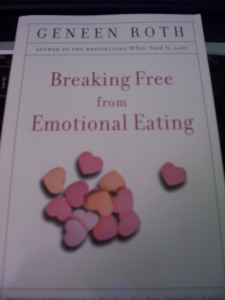
Recently, there was a book fair and I picked up a wonderful little book called Breaking Free from Emotional Eating by Geneen Roth. I’ve just started to read it but I believe it has something to add to this series on Stress Eating as well. Her book is conversational in tone with catchy chapter titles (“Being Hungry is Like Being in Love: If You Don’t Know You’re Probably Not” and “On Sexuality: Men Use Sex the Way Women Use Food”).
In the very first chapter, I think she nails it on the head why “diet” has gotten a bad rap. The plethora of diets at people’s disposal are staggering and what’s worse is the fact that they all provide “so many contrasting bits of information about food” making it difficult for consumers to make sense of it all. But here’s the kicker… Roth goes on to say that “dieting” teaches us to not trust our “body’s messages” conditioning dieters to forget eating has anything to do with hunger. (Roth 3)
Although, in truth, I think that’s only half of the equation because in first world nations, we have plenty of food (well most of us at any rate) so we just go about our routines of life including regular mealtimes.
I’ve done so much stress eating and snacking in the last four years that I came to the realization about a month ago that I had forgotten what it felt like to actually be hungry hungry. The type of hungry where I feel empty in the abdomen and have a slight queasiness going on at the same time. What’s more is that I forgot that while those sensations aren’t always a comfortable feeling, they are not harmful. So now I make the effort to not eat just because the clock says it’s time to and instead continue with whatever I’m doing whether that be reading, writing, crocheting, exercising, or whatever. Then I find often when I’ve completed my task that it’s the next meal time. I just have to continually be mindful of my body’s signals because of my hypoglycemia, but other than that it’s no big deal to let myself feel hunger.
Now, let’s move on to thirst.
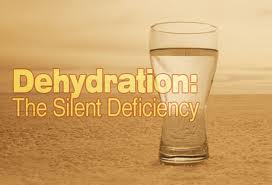
Water and the Thirst Mechanism
How does the thirst mechanism work? The hypothalamus (a part of the brain) keeps tabs on the blood balance, which is mainly water. It does this by sensing “the concentrated blood particles, low blood volume, or low blood pressure” initiating “nerve impulses” which the brain registers as thirst (Sizer 280).
Here’s where I’m gonna get a little technical: The hypothalamus tells the pituitary gland (also in the brain) to release a hormone that will basically recycle the water from the fluid destined to become urine. This helps to balance the mineral levels in the blood. At the same time the kidneys also secrete “regulatory substances” in response to the elevated sodium concentrations in the blood filtering through them. (Sizer 280)
Okay, now that that’s out of the way, let’s move on…. The human body is roughly 2/3 water weight (depending on which type of medical person you’re talking to, they say anywhere from 60-75% of a person’s weight is water).
Importance of Water: Because water is vital (that is it’s extremely important) to homeostasis (the perfect balance) of the human body, a signal to let us know when we are needing more fluids is necessary. If we didn’t know when to rehydrate, we would be in for a world of hurt. As discussed in previous installments, water is needed to cushion our joints, our organs and cells from one another thereby preventing damage. Furthermore, because the blood is primarily water, as water is lost blood becomes more viscous or sticky and syrup-like which slows blood flow and makes it more difficult for nutrients and oxygen to be effectively spread throughout the body. When a body doesn’t have enough water it becomes dehydrated and if ignored can become life-threatening.
Ways Body Loses Water: Through Perspiration (Sweat), Exhalation, and Urination. (Oh! And through bleeding and crying, too!) A dry mouth and tissues is a result of the body pulling moisture from where it can when we aren’t drinking enough water. In many ways, the body can be parasitic. Or maybe cannibalistic is a more suited term? When homeostasis cannot be achieved with what we have ingested the body will pull what it needs from wherever it can. If calcium is needed to balance blood minerals, the body leaches it from the bones. The body will do whatever is necessary to keep running until it cannot do so anymore.
Dehydration Facts: Dehydration is when the body has lost too much water. Mild dehydration occurs when ≤5% of a person’s body weight in water is lost (ex. a 170-lb person contains roughly 100 lbs of water. To have lost even 3% would mean a loss of 3 lbs of water which is 6 cups!). Severe dehydration occurs when over 5% of water is lost. Beware! If you fall under the “severe” category, GET yourself to the hospital IMMEDIATELY!!! You may require an IV drip to reestablish the proper balance of minerals in your blood along with the water. This is not something to mess around with!
According to my Nutrition book, “A first sign of dehydration is thirst, the signal that the body has already lost up to 2 cups of its total fluid and that the need to obtain fluid is urgent” (280). In the example above, the loss of 2 cups is equal to the loss of 1% or one pound! Ignoring the thirst signals is not good. Eat some watermelon or another food with a high water content to help. And if you don’t like the taste of water, use fruits high in water content like citrus to flavor your water!
The old belief that everyone needs 64 ounces (or 8 glasses) of water a day isn’t entirely accurate because as our waistlines have grown so has the percentage of our weight that is water. So most medical professionals have switched to saying half of your body weight in ounces (ex. a person who’s around 130 lbs would need 64oz per day, but a 200-lb person would need 100oz). Word of caution: Please do not attempt to get all of you day’s worth of water in one sitting as this can lead to “water intoxication”. It’s not the same as becoming intoxicated from alcohol either. While it is a rare occurrence, it frequently happens in adults who “have consumed several gallons of plain water in a few hours’ time” (280). A gallon of water is about 128 ounces!

Symptoms of Dehydration (Sizer 281, Table 8-1)
Mild: Thirst, Sudden Weight Loss, Rough and Dry Skin, Rapid Pulse, Low Blood Pressure, Lack of Energy; Weakness, Impaired Kidney Function, Reduced Quantity of Urine; Concentrated Urine, Decreased Mental Functioning, Decreased Muscular Work and Athletic Performance, Fever or Increased Internal Temperature, Fainting, and Dry Mouth, Throat, Body Linings.
Severe: Pale Skin, Bluish Lips and Fingertips, Confusion; Disorientation, Rapid and Shallow Breathing, Thickening of Blood, Shock; Seizures, Coma; Death. Also, a Weak, Rapid, Irregular Pulse.
Chronic Low Fluid Intake: Cardiac Arrest (heart attack) and other heart problems, Constipation, Dental Disease, Gallstones, Glaucoma (elevated pressure in the eye), Hypertension, Kidney Stones, Pregnancy/ Childbirth Problems, Stroke, and UTIs (Urinary Tract Infections).
Need more reason to drink more water? According to Posner and Hlivka, “Cold water increases your metabolism by about 3 percent. Your body expends more calories warming it up. Drinking the right amount of water can [also] help you burn more calories” (91). 😀
I just had to share this simple chart from Tubbs Pike’s blog:
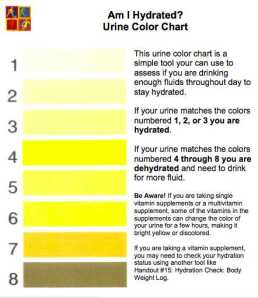
Important Note about this blog’s author:
While I will, indeed, have my Associate Degree in Health & Wellness in May 2013, I am not a doctor, nor am I aware of your medical issues. The health, nutrition, and wellness statements made in this blog should be taken in conjunction with advice from your healthcare professional. This is especially important if you are under constant supervision by a physician for a chronic health condition.
So again, if you have any food sensitivities or allergies, please avoid those foods which you already know to cause you issues. There should be plenty of options to select from each category that Posner and Hlivka cited in their book, which I have taken verbatim from the pages of Stress Eater Diet.

